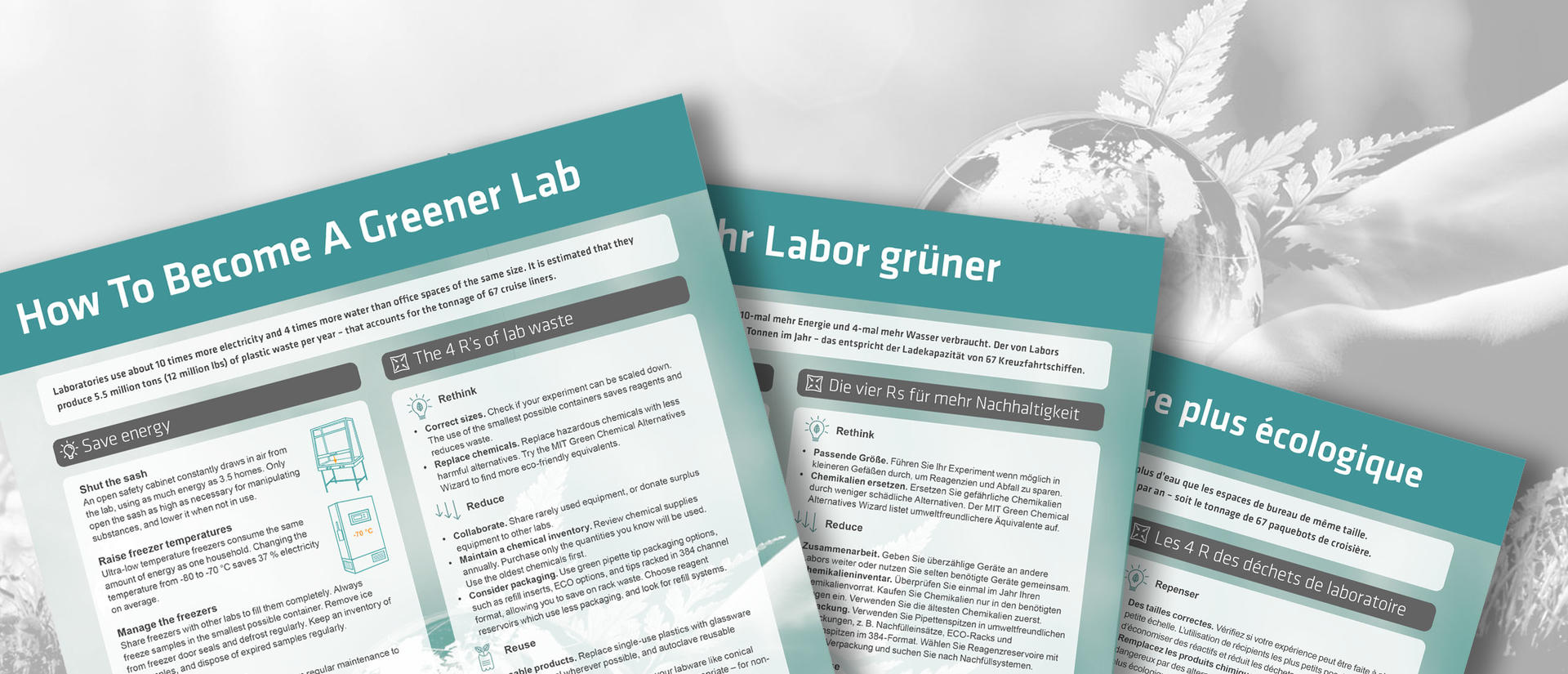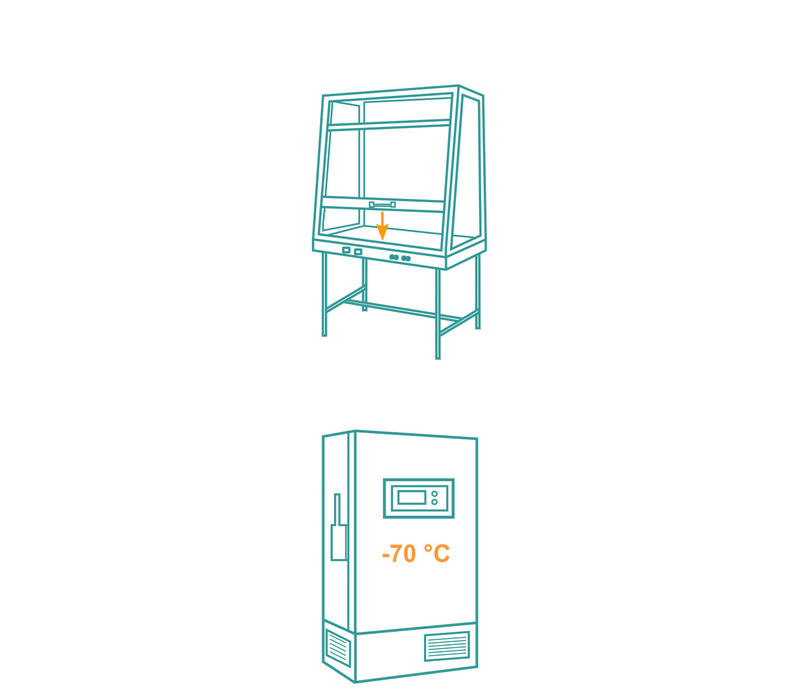How to become a greener lab
How to become a greener lab

Would you like to reduce your lab's environmental footprint? We've put together a few easy-to-implement tips that can help you. Learn how to reduce your waste, energy use and water consumption.
If you wish, you can also download the tips as a poster.
Laboratories use about 10 times more electricity and 4 times more water than office spaces of the same size. It is estimated that they produce 5.5 million tons (12 million lbs) of plastic waste per year – that accounts for the tonnage of 67 cruise liners.
Save energy
Shut the sash
An open safety cabinet constantly draws in air from the lab, using as much energy as 3.5 homes. Only open the sash as high as necessary for manipulating substances, and lower it when not in use.
Raise freezer temperatures
Ultra-low temperature freezers consume the same amount of energy as one household. Changing the temperature from -80 to -70 °C saves 37 % electricity on average.
Manage the freezers
Share freezers with other labs to fill them completely. Always freeze samples in the smallest possible container. Remove ice from freezer door seals and defrost regularly. Keep an inventory of all samples, and dispose of expired samples regularly.

Schedule maintenance
Keep your appliances clean, and perform regular maintenance to ensure reliable operation.
Flip the switch
Turn off lights, computers and equipment when not in use. Install socket timers and easily accessible power strips.

Save water
Use vacuum pumps
Do not use a stream of water for aspiration, instead use a powered vacuum system, which is also safer.
Fill appliances
Only run dishwashers and autoclaves when they are full, and ask your colleagues to help fill them up. Share incubators with other labs to get them filled.
Cover the water bath
Closing the cover reduces evaporation, and requires less energy to maintain the desired temperature.

Mount low-flow aerators
A faucet uses 4-8 liters (1-2 gallons) per minute. Equip your faucets with low-flow aerators that reduce the flow and prevent spraying.
Use deionized water sparingly
Use tap water whenever possible. The production of 1 unit of deionized water requires 3 units of water. For water baths, media preparation or cleaning glassware, ISO Grade 3 water (reverse osmosis water) is sufficient.

The 4 R’s of lab waste
Rethink
- Correct sizes. Check if your experiment can be scaled down. The use of the smallest possible containers saves reagents and reduces waste.
- Replace chemicals. Replace hazardous chemicals with less harmful alternatives. Try the MIT Green Chemical Alternatives Wizard to find more eco-friendly equivalents.

Reduce
- Collaborate. Share rarely used equipment, or donate surplus equipment to other labs.
- Maintain a chemical inventory. Review chemical supplies annually. Purchase only the quantities you know will be used. Use the oldest chemicals first.
- Consider packaging. Use green pipette tip packaging options, such as refill inserts, ECO options, and tips racked in 384 channel format, allowing you to save on rack waste. Choose reagent reservoirs which use less packaging, and look for refill systems.

Reuse
- Reusable products. Replace single-use plastics with glassware or stainless steel wherever possible, and autoclave reusable products when necessary.
- Wash your labware. Wash and reuse your labware like conical tubes, reservoirs and plastic bottles – where appropriate – for non-sterile workflows.
- Refill your tip racks. Use non-sterile or pre-sterilized tip inserts in a reusable base, avoiding up to 60 % plastic waste.
- Reuse packages. Keep some polystyrene and cardboard boxes of different sizes to reuse for your own packages or as ice boxes.

Recycle
- Organize collection. Find a recycling program in your region, and place recycling bins in your lab. Place posters identifying what can be recycled next to each bin, and train the staff to use them correctly.
- Recycle solvents like ethanol and xylene with a distiller, or participate in a solvent recycling program.

Purchase sustainably
Combine orders
Keep an inventory, and place bulk orders with other labs to reduce packaging and transport emissions. Do not insist on fast delivery if it is only possible by air freight, since it is 200 times more damaging to the environment than sea freight.

Purchase green devices
Order energy-efficient appliances. Choose manufacturers that use renewable energy to produce long-lasting devices.























